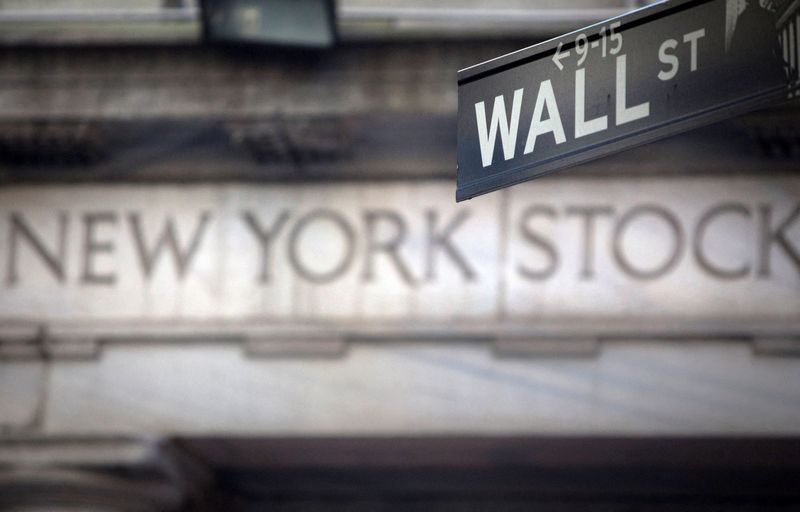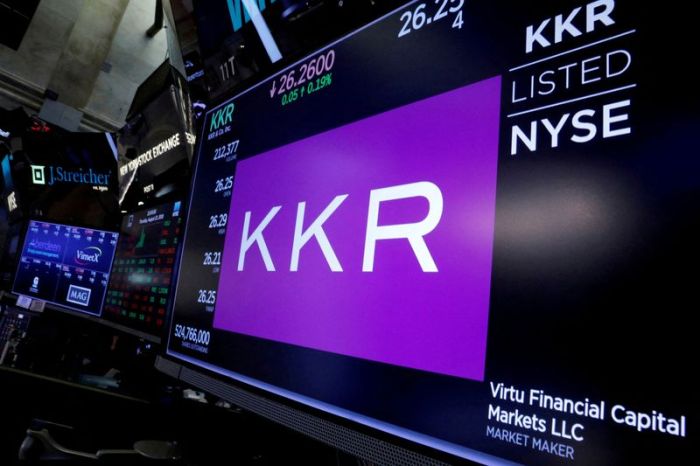(Reuters) – The three main Wall Street benchmarks had their best days in over a month on Tuesday, with the Nasdaq closing up 2.2%, as investors responded to positive earnings and dovish comments from two U.S. Federal Reserve officials on interest rate rises.
Johnson & Johnson advanced 3.1% to a second record close in three sessions, as the drugmaker’s quarterly profit exceeded market expectations and it raised its dividend payout.
Of the first 49 companies in the S&P 500 index to report quarterly earnings, 79.6% have exceeded profit estimates, as per Refinitiv data. Typically, 66% beat estimates.
“It certainly feels like every earnings season, especially since March 2020, is more important than the next, but particularly given where we sit in the economic cycle, the Fed’s rate hike cycle, and the elevated inflation backdrop,” said Max Grinacoff, equity derivatives strategist at BNP Paribas.
International Business Machines Corp gained 2.4%, before ticking up a further 1.8% following its latest numbers report after market close.
Meanwhile, Netflix Inc closed 3.2% up, before cratering 24% after the bell when it reported subscriber numbers had declined for the first time in a decade. The streaming company also forecast further losses in the second quarter.
St. Louis Federal Reserve Bank President James Bullard on Monday repeated his case for increasing the rates to 3.5% by the end of the year to slow a 40-year-high inflation. He also said he did not rule out a 75 basis points rate hike.
Stocks appeared to brush aside the remarks, and the main indexes rallied further in late afternoon trading after both Chicago Federal Reserve Bank President Charles Evans and Atlanta Federal Reserve Bank President Raphael Bostic offered more dovish comments.
Bond yields continued their recent moves higher though. The 30-year yield exceeded 3% for the first time since April 2019, while the yield on the 10-year Treasury Inflation-Protected Securities (TIPS) turned positive for the first time since March 2020, the start of the coronavirus pandemic.
“We typically assume higher yields should be beneficial for banks, but that correlation has broken down a bit and it’s been the sectors most negatively-correlated to rising rates – defensive sectors – which have actually rallied,” said BNP’s Grinacoff.
The Dow Jones Industrial Average rose 499.51 points, or 1.45%, to 34,911.2, the S&P 500 gained 70.52 points, or 1.61%, to 4,462.21 and the Nasdaq Composite added 287.30 points, or 2.15%, to 13,619.66.
The advances were the most by all three since March 16.
Ten of the 11 major S&P subsectors were higher, led by consumer discretionary stocks. Among the best performers in the index were gaming companies, with Wynn Resorts Inc, Caesars Entertainment Inc and Penn National Gaming Inc gaining between 4.9% and 5.9%.
Energy stocks fell 1% as oil prices tumbled 5.2% after the International Monetary Fund cut its growth forecasts for the global economy and warned of higher inflation. [O/R]
This year’s rally in crude prices, which are still up around a third despite Tuesday’s declines, helped Halliburton Co post an 85% rise in first-quarter adjusted profit as demand for its services and equipment increased. However, the oilfield services firm’s shares were 0.8% lower, amid the wider slump in energy stocks.
Meanwhile, Twitter Inc declined 4.7%. More private equity firms have expressed interest in participating in a deal for the micro blogging site, according to reports.
Trading volume on U.S. exchanges was 10.53 billion shares, compared with the 11.67 billion average for the full session over the last 20 trading days.
The S&P 500 posted 35 new 52-week highs and 11 new lows; the Nasdaq Composite recorded 70 new highs and 333 new lows.
(Reporting by Sruthi Shankar and Devik Jain in Bengaluru and David French in New York; Editing by Anil D’Silva and Arun Koyyur, Sriraj Kalluvila and Grant McCool)






















